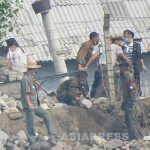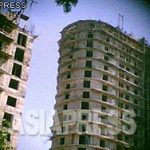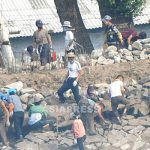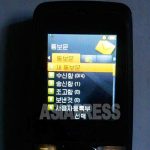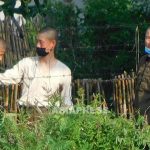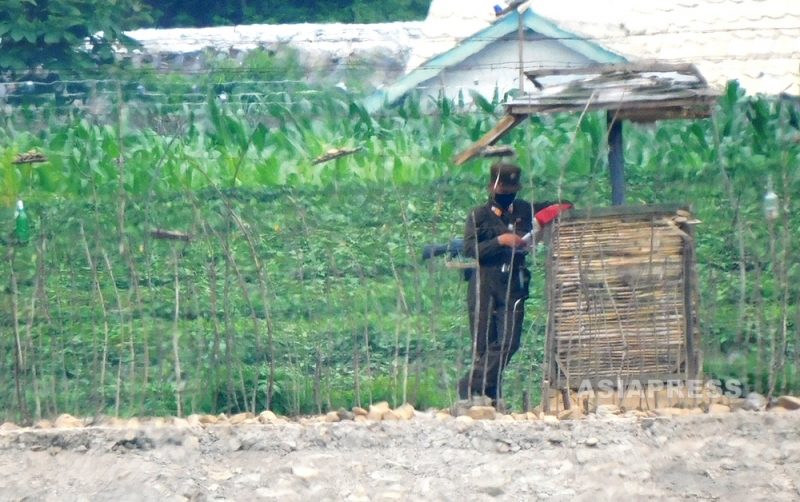
North Korea continues to stubbornly maintain its “national isolation” in response to the coronavirus pandemic. So, what is going on inside the country? Our reporting partner in China took pictures of the border region with a super-telephoto lens to help find out. In this second report, we will take a look at Sakju County in North Pyongan Province. Almost all photos were taken in mid-July 2021.
Click here for the first article in the series: <Latest Photo Report> Scenes of North Korea Captured by Super Telephoto Lens (1) Residents Replaced by Border Guards Along the Riverside [ISHIMARU Jiro]
It has been a year and seven months since the Kim Jong-un regime focused on stopping the influx of the coronavirus by closing the border with China, almost wholly halted the flow of people and goods in and out of the country.
It has been a year and seven months since the Kim Jong-un regime focused on stopping the influx of the coronavirus by closing the border with China, almost wholly halting the flow of people and goods in and out of the country.
It is not only the trade gateways that are closed. The entire borderline between China and the DPRK, the Yalu and Tumen Rivers, covering a distance of 1,400 kilometres, is closed off. Since the COVID-19 outbreak, the Kim Jong-un regime has invested enormous military forces in this long "line" to create a buffer zone which does not allow people to approach the rivers.
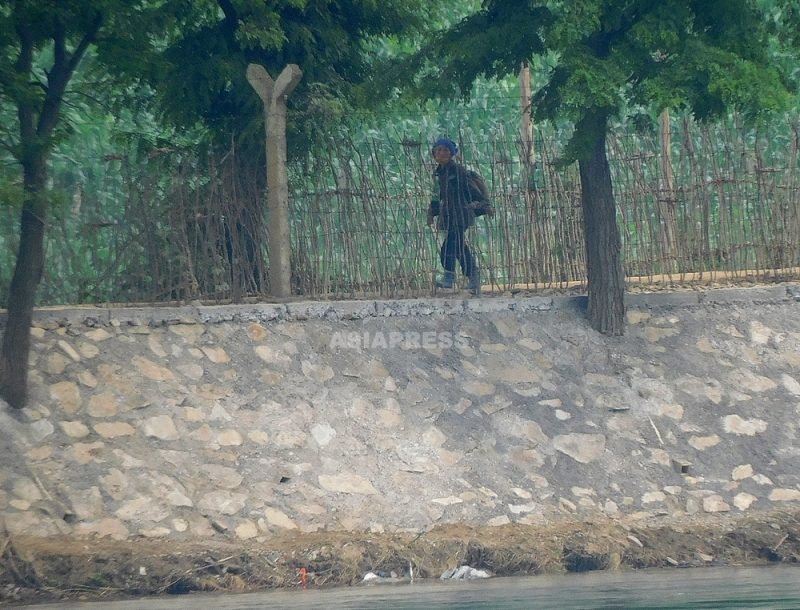
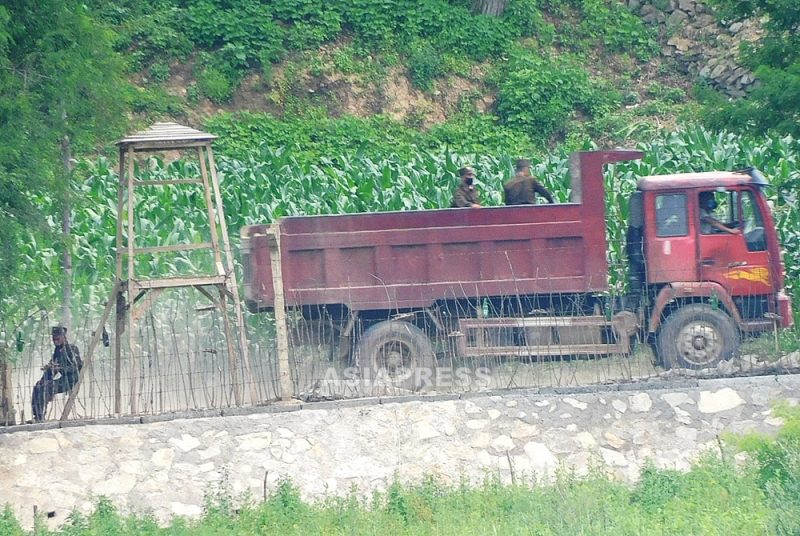
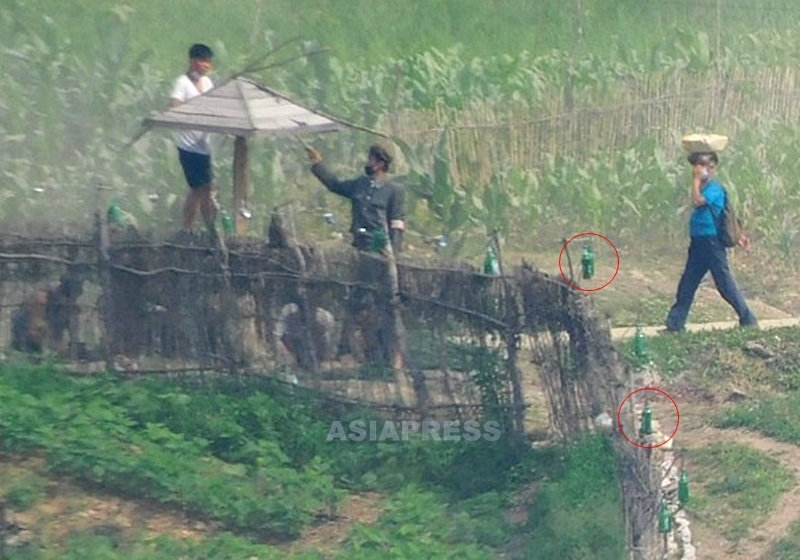
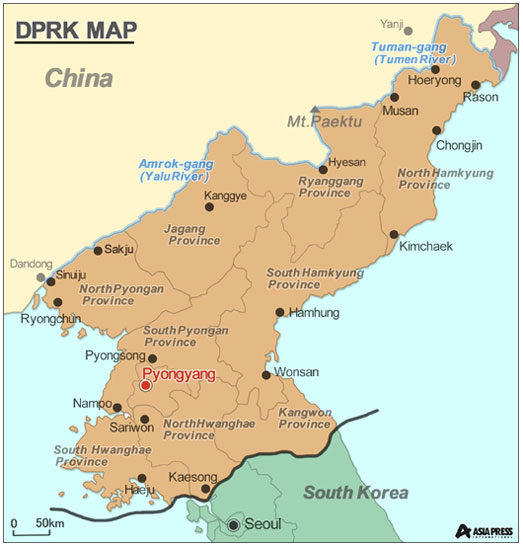
Since 2010, the North Korean authorities have been installing barbed wire along the border rivers. This is aimed at preventing people from escaping into and smuggling from China. However, the river is an essential source of water for residents, who use it for bathing, washing and drinking. Furthermore, fishing and water transportation were important activities in the lower reaches of the Yalu River.
Last year, the Kim Jong-un regime imposed a total ban on residents' access to the Yalu and Tumen rivers. Kim Jong-un issued the order directly, saying that the virus could enter the country through smugglers, border residents, and floating debris that drifted ashore. As a result, the number of residents using the river has hit zero.
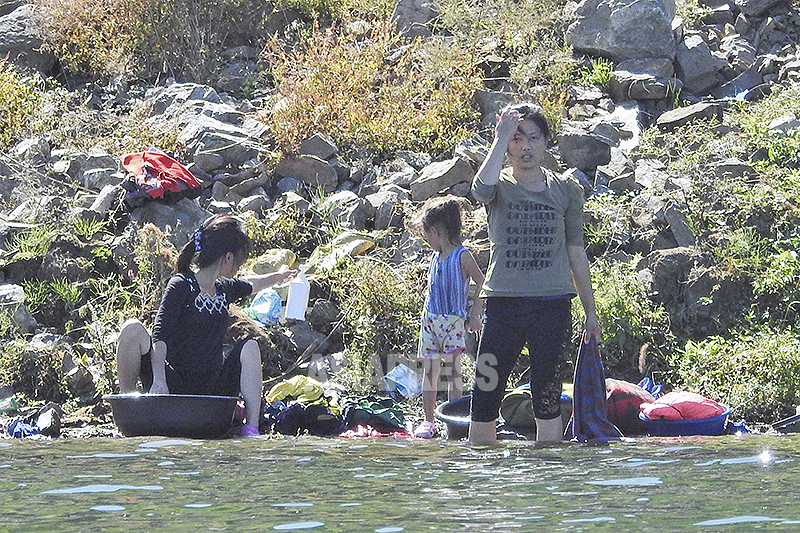
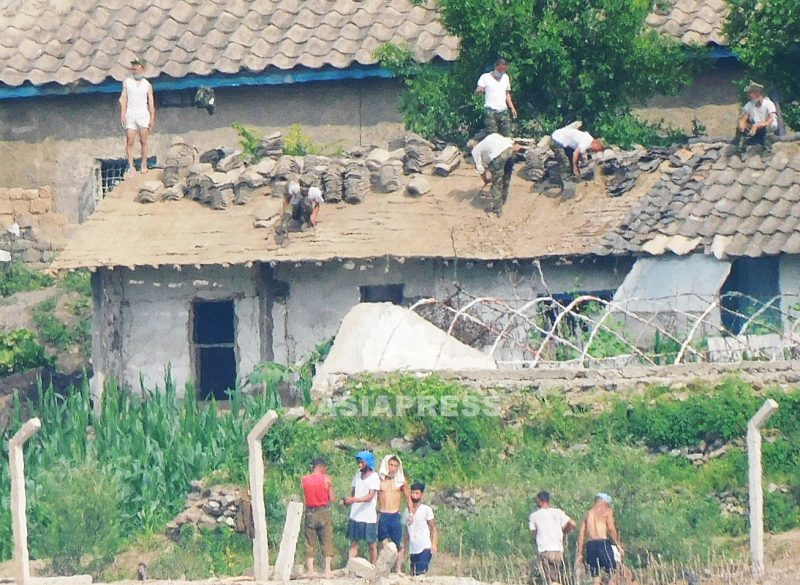
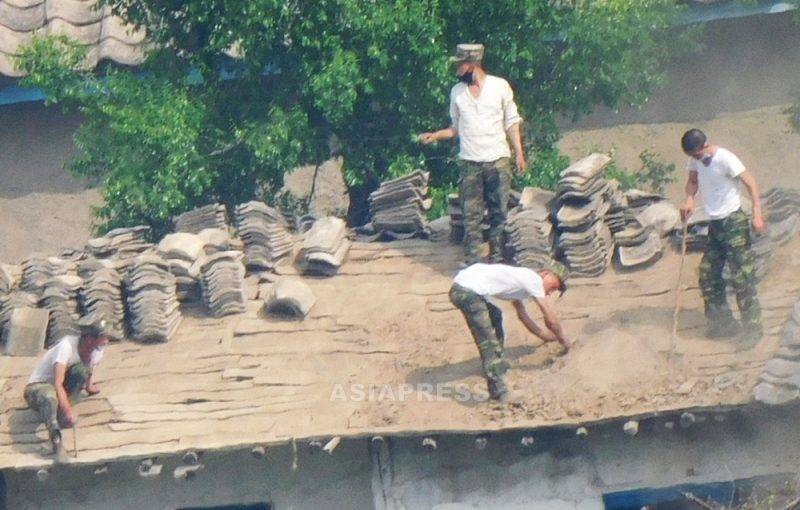
Last August, the Ministry of Social Security (police) announced that anyone approaching the buffer zone without permission would be punished under military law and shot without warning.
Now, the installation of new barbed wire along the Yalu and Tumen Rivers is steadily underway, utilizing mobilized troops and residents. The writer believes that the aim is to completely blockade the 1,400-kilometer border at all times on the pretext of preventing coronas.
Excessive coronavirus countermeasures have severely depleted the domestic economy, and some of the impoverished urban residents are even starving to death. So, it is no wonder that several people are trying to cross the border into China, as they did in the late 1990s and over the last decade. In addition, the border blockade is stopping defectors living in South Korea from sending money to their families in North Korea through smugglers and also preventing the inflow of "impure information" such as South Korean dramas and songs.
The border with China was North Korea's only route for people, goods, and information from the outside world to come and go. However, the Kim Jong-un regime intends to completely shut it down in the name of preventing the influx of coronavirus.
Through this border policy, the government is mobilizing the military and local residents to construct their own cage.
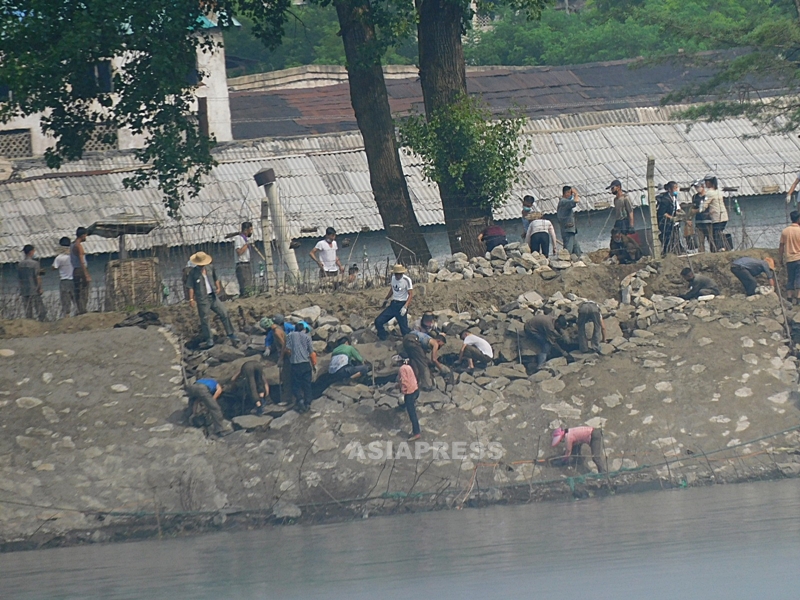
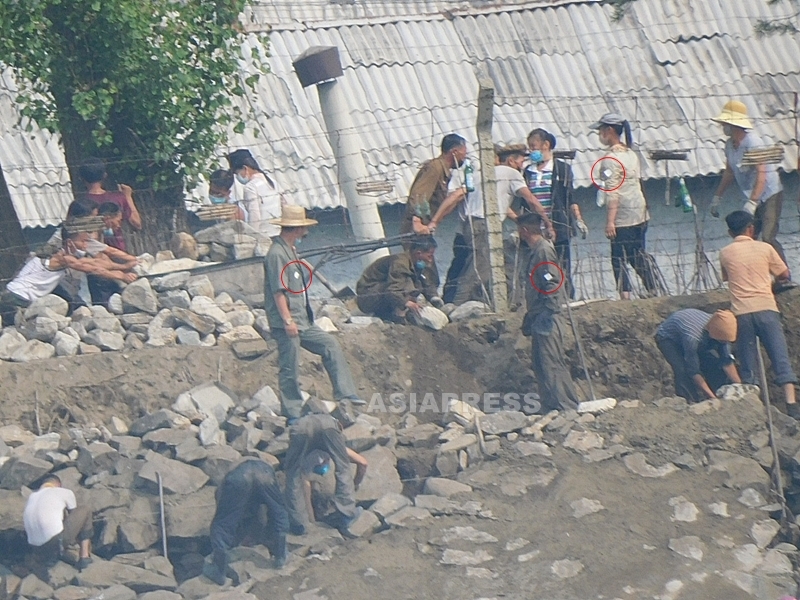
◆Is agricultural production in a slump?
The photographer's super-telephoto camera also captured images of people working in the fields. They seemed to be weeding. However, a young woman was dressed casually and did not look like a member of a cooperative farm.
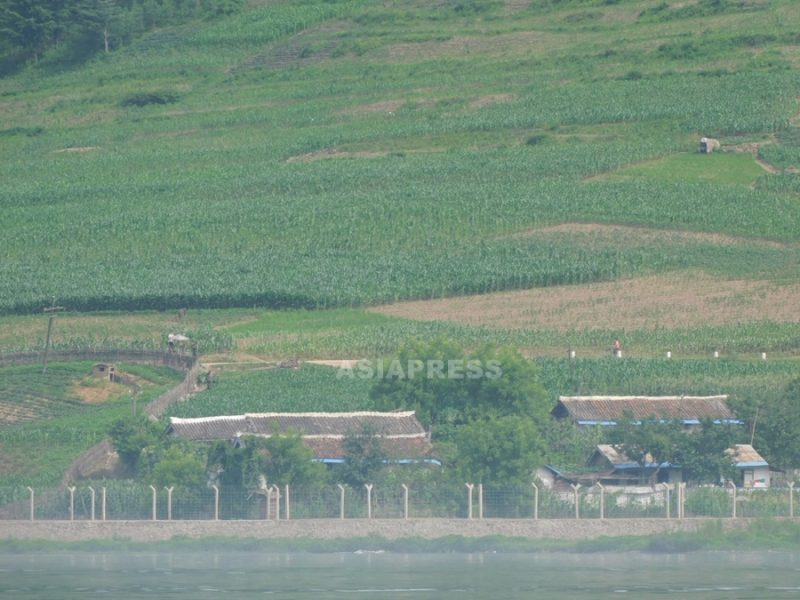
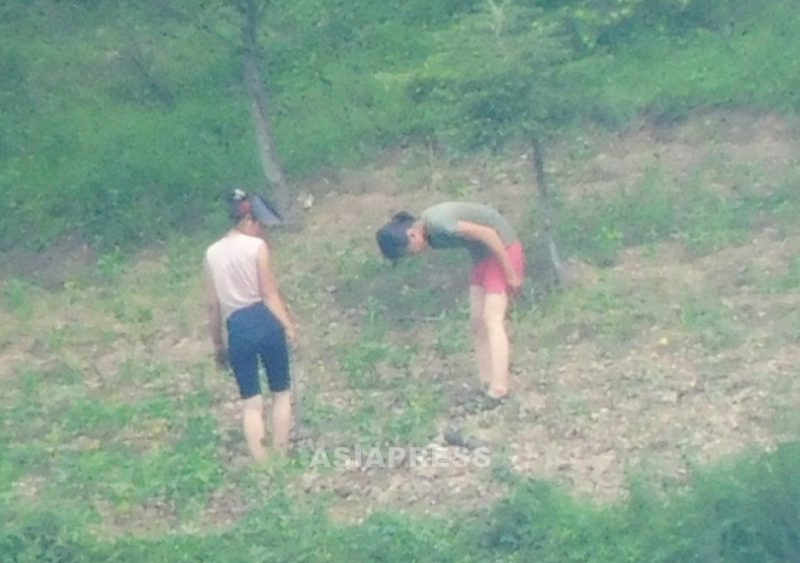
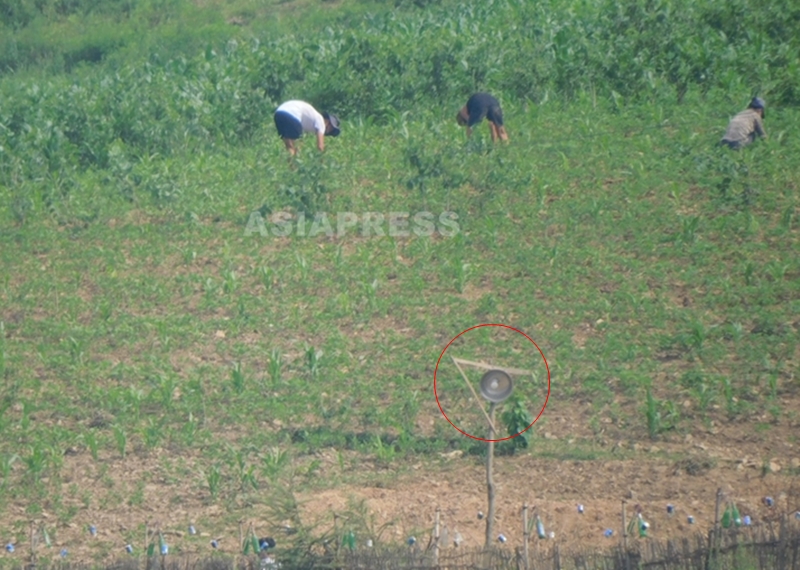
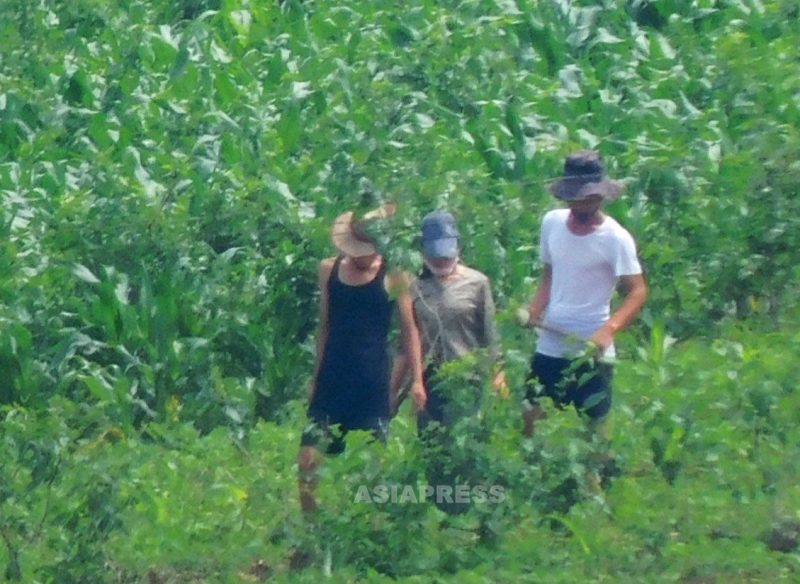
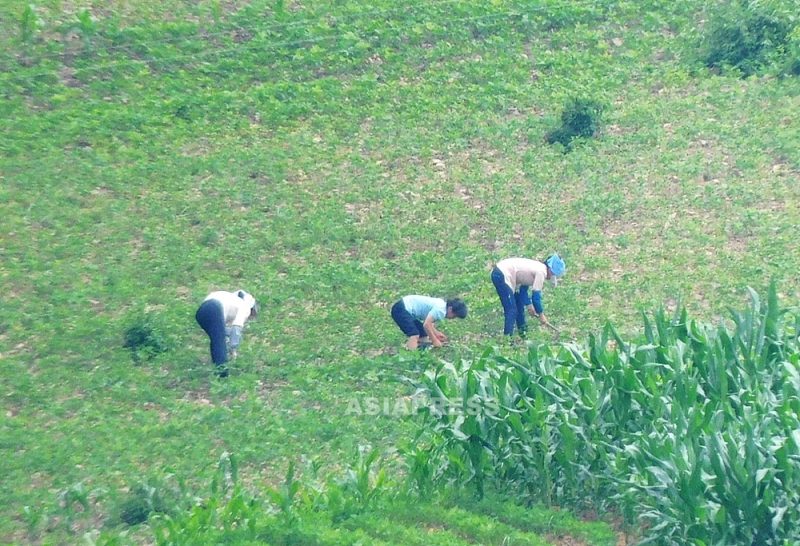
We asked a defector from Jagang Province to look at a series of photos. Jagang Province is a region with a similar latitude and climate to North Pyongan Province, where the images were taken.
"The people in photos 11 and 13 don't look like farmworkers to me. I think they are residents weeding their fields in the mountains. However, the three men in photo 14 are probably farmworkers. The way they are dressed, sunburned, and wearing insect repellent makes them look that way.”
In May last year, the Kim Jong-un regime ordered a strict crackdown on the private "hidden fields" in the mountains, known as "small lands," and either incorporated them into cooperative farms or designated them as no-till lands for planting. But is it actually still possible for individuals to cultivate "small lands"?
"In photo 12, you can see what looks like a knee-height sapling planted in the area where they are weeding. Perhaps someone is planting soybeans in the gap and weeding for maintenance. You can also sedae a plot of land where nothing has been produced. I think this is ‘small land’ that was collected and left without being planted.”
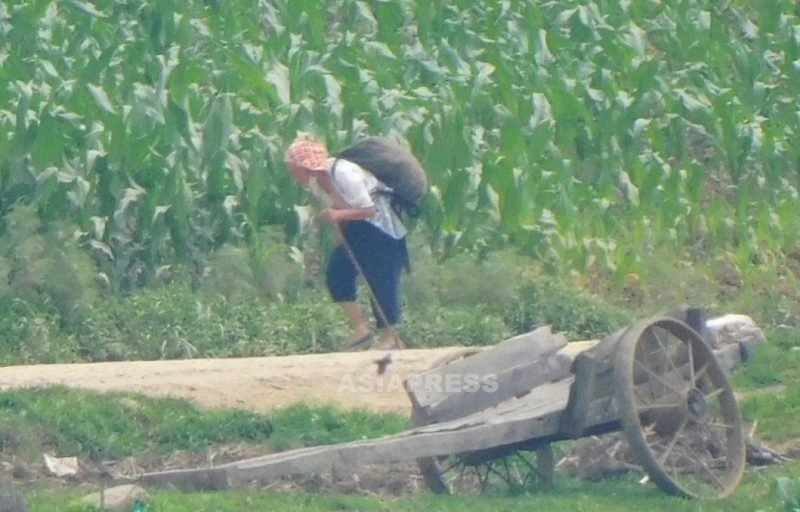
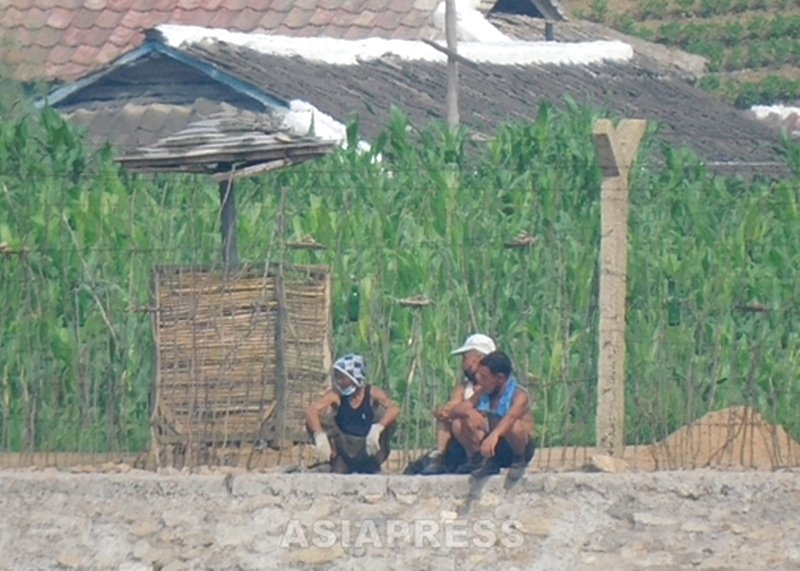
The defector who saw the photos was highly concerned about the condition of the cornfield.
"First of all, for mid-July, the growth looks pretty bad. The ears should be swollen to some extent at this time of year, but they are very small or not visible at all. Also, there is a big difference in the height of the corn depending on the field. Fields that are sown in April and then fertilized and weeded out frequently grow well. This is probably because individuals manage the fields and the farm's fields are an afterthought.”
The northern region of North Pyongan Province, where the photo was taken, is an area where there were no reports of sunshine or heavy rain until mid-August. If the growth of corn, a staple food there, is not good, North Korea's agricultural production this year will probably decline considerably. The defector who explained the photos made this prediction. (end)
- <Inside N. Korea> Supply of COVID-19 Disinfectant and Protective Clothing Improves. “If you eat garlic, you won't be infected,” said residents. (2021-08-16)
- <Inside N. Korea> Electricity situation deteriorates further: “Even in the city centre, supply is limited to one or two hours a day.” Equipment and parts not coming in from China. (2021-08-16)
- <Inside N. Korea> Resentful Residents Forced to Foot the Bill for National Flood Recovery as Regime “Has No Money” (2021-08-13)
- <Latest Photo Report> Scenes of North Korea Captured by Super Telephoto Lens (1) Residents Replaced by Border Guards Along the Riverside [ISHIMARU Jiro] (2021-08-10)
- <Inside N. Korea>Domestic Currency Appreciates by 22% as Chinese Yuan and U.S. Dollar Mysteriously Plunge Again (2021-08-05)
